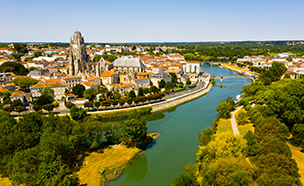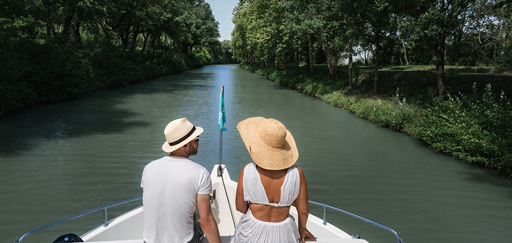The Brandenburg region is full of surprises. From its history, sport, nature and urban heritage, we’ve picked out a few of the unmissable features of this area, known as the Tuscany of the north.
The Havelland
The Havelland is located at the north-western approaches to Berlin and Potsdam. The River Havel winds along for 150 km between Berlin and the Elbe estuary, crossing several lakes that are perfect for watersports. With a choice of cycling or walking routes, sailing or fishing, you’re bound to find something to make your trip pleasant and peaceful. Nature-lovers and anyone fascinated by local culture will enjoy visiting the Westhavelland Natural Park. In Brandenburg you could visit the Cathedral of Saints Peter and Paul, which was founded in 1165 and has several Gothic altarpieces, or the Rathaus, which dates from 1474.
Templin, Chancellor Merkel’s childhood home
Brandenburg is also well-known because of the town of Templin. This 13th-century town, 80 km from Berlin, was the place where Angela Merkel spent much of her childhood. It’s a centre for tourism and offers a good range of sports and leisure activities. Culture and the arts are of major importance in this popular small town. It is surrounded by lakes and forests, so you can try walking, canoeing or lovely trips on the German lakes.
A Land of History
The region – nicknamed “Frederick’s Sandpit”, a reference to Frederick the Great, the former King of Prussia – was the crucible in which Prussian history was forged. It has nearly 500 stately homes where you can discover the art of the Prussian garden, Brandenburg-style.
Potsdam, the capital of the area, is home to the famous Sanssouci Palace, Frederick the Great’s summer residence. In the 18th century, Frederick II ordered the palace to be built and its unusual name reflects the King’s wish to have a stress-free residence, a place where he would have no problems. According to legend, Frederick the Great used to say that his palace aged at the same rate that he did, because he had imprinted his character on it. Its highly personal and surprising rococo style came to be known as “Frederician rococo”, a mixture of all the artistic styles of the period.
Brandenburg bears witness to the days when Germany was divided and has many remains from the time of separation. If you cycle along beside the remains of the Berlin Wall or walk across the Glenike Bridge, you can get some idea of the history of these places.
Festival Time in Berlin
In Berlin, you’ll be spoilt for choice when it comes to entertainment! From 30 September to 16 October, the Festival of Lights (Berlin leuchtet) dazzles the city every year and allows you to get to know or rediscover the capital. The interplay of colour and shadow displays the city in a completely new light. To say that Germany celebrates beer is an understatement! From 23 September to 16 October, the Oktoberfest celebrates the golden nectar. Admittedly, it’s not on quite the same scale as the Munich Oktoberfest, but it should more than satisfy lovers of hops and of Bratwurst and Sauerkraut! This festival will take place in the Zentral Festplatz on the Kurt-Schumacher-Damm.
Step aboard your canal barge and get carried away by festivals, nature, history and relaxation. Brandenburg never ceases to amaze!





















